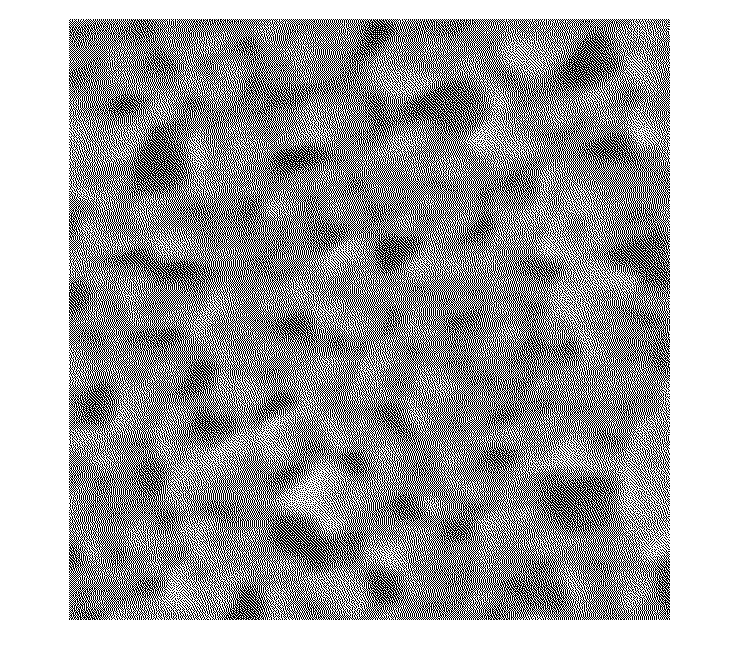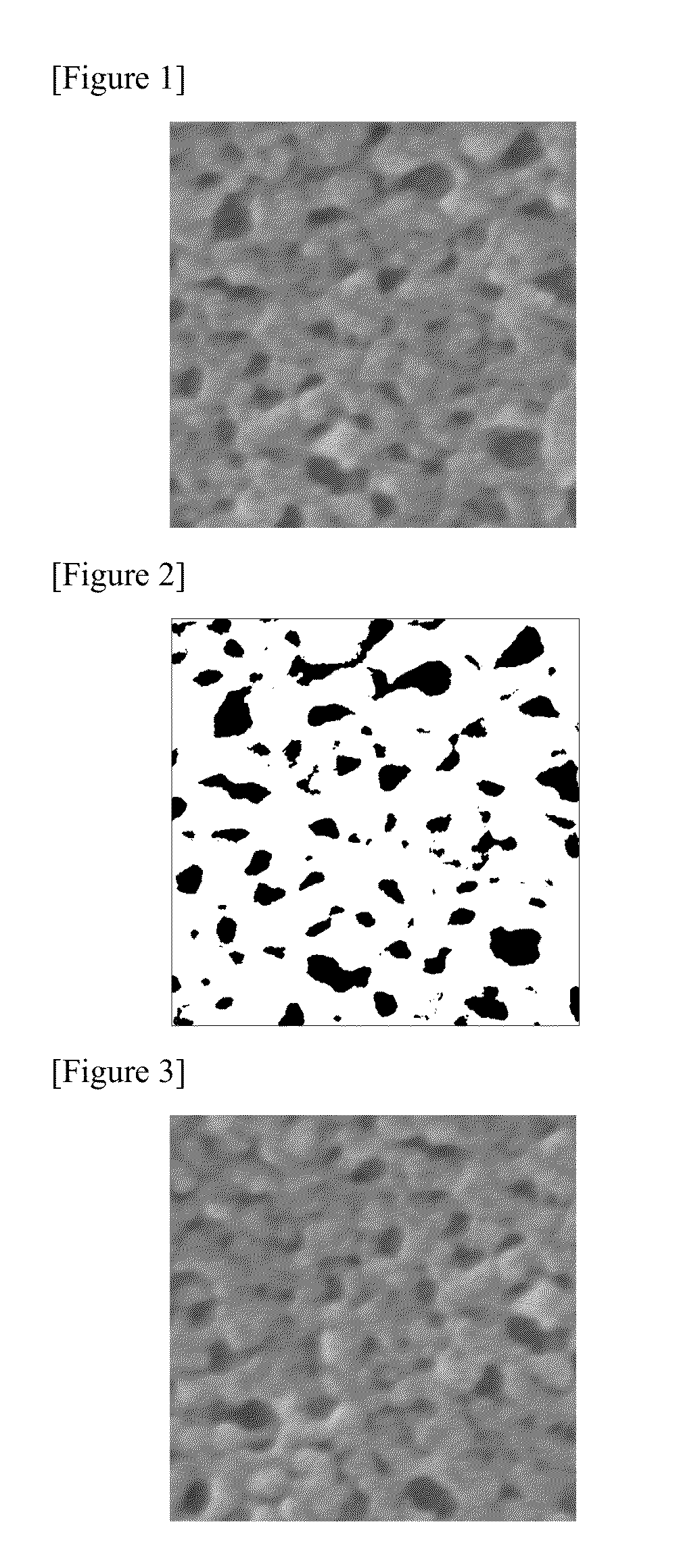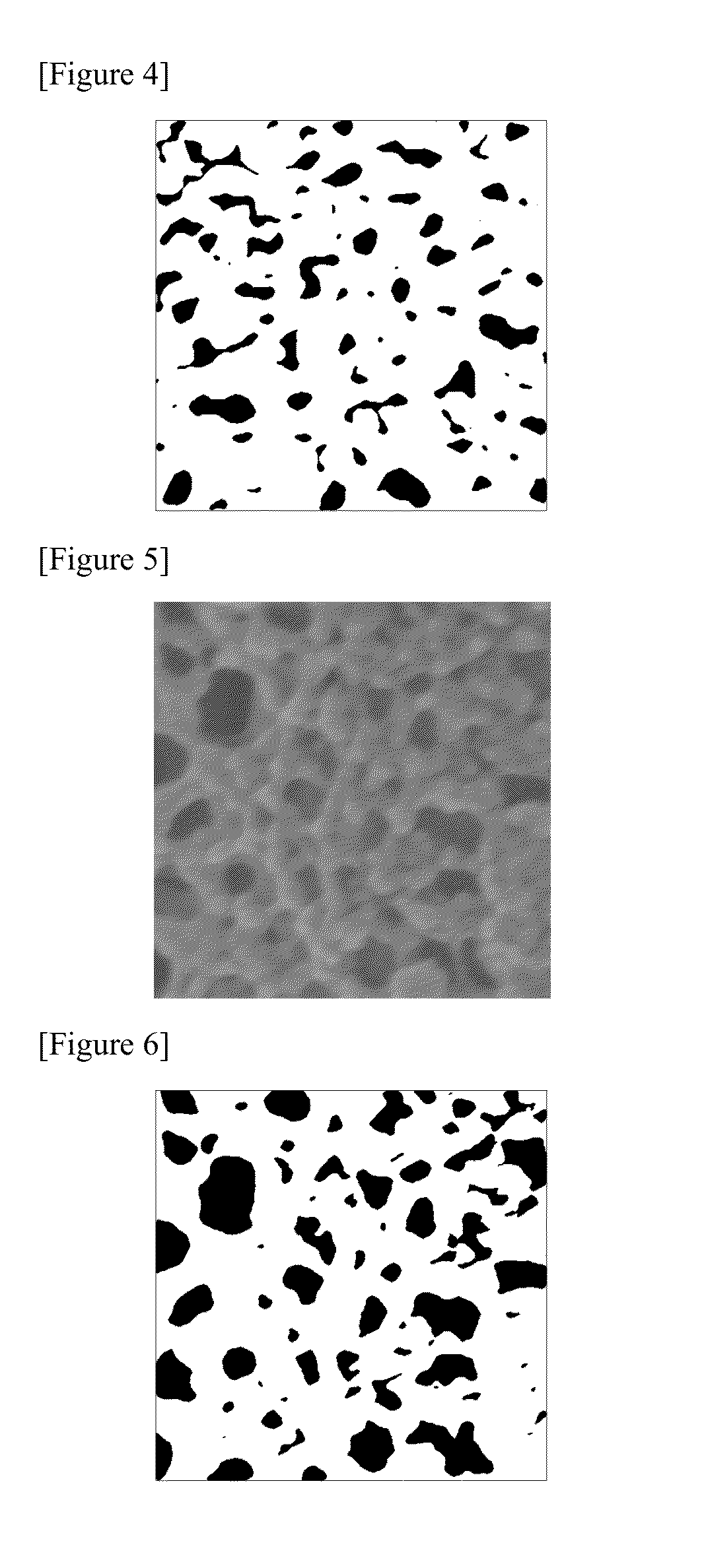Porous body and production method therefor
- Summary
- Abstract
- Description
- Claims
- Application Information
AI Technical Summary
Benefits of technology
Problems solved by technology
Method used
Image
Examples
example
Example 1
[0108]A polymethylene methacrylate (“UT300”, manufactured by Mitsubishi Rayon
[0109]Co., Ltd.) and, as an aliphatic polyester, a polylactic acid resin whose D-isomer content is 1.4% and weight-average molecular weight determined by GPC measurement is 260,000 based on PMMA were fed at a weight ratio of 50 / 50 to a biaxial melt-kneading machine equipped with a T-die adjusted to have a lip clearance of 0.2 mm (HK-25D, manufactured by Parker Corporation, Inc.) to perform membrane formation from the resulting melt polymer at a temperature of 240° C. By controlling the drum temperature at 60° C. and adjusting the roll-up rate, an alloy sheet having a thickness of about 150 μm was prepared.
[0110]The thus obtained sheet was cut out into a 10 cm×10 cm square and immersed in 100 mL of a 20%-by-weight aqueous potassium hydroxide solution for 3 days to remove the polylactic acid by hydrolysis, thereby performing porosification of the sheet. Then, after immersing the resulting sheet in 50...
example 2
[0112]A porous sheet comprising a polymethyl methacrylate as a main component was obtained in the same manner as in Example 1, except that the melt-kneading temperature was changed to 200° C.
[0113]A cross-section of the thus obtained porous sheet was observed under a transmission electron microscope at a magnification of ×1,000 and a square micrograph of 2 μm×2 μm was taken. The thus obtained micrograph was Fourier-transformed and the pore diameter and an index of uniformity, (a) / (b), were determined based on the wavenumber and half value width of a peak in a graph plotted with the wavenumber on the abscissa and the strength on the ordinate. Further, the sheet was dissolved in deuterated chloroform and a proton nuclear magnetic resonance spectrum was measured to determine the ratio of isotactic polymethyl methacrylate in polymethyl methacrylate (% by weight). As shown in Table 1, the porous sheet obtained in Example 2 was a membrane having a uniform porous structure and being compos...
example 3
[0119]A polymethylene methacrylate (“MHF”, manufactured by Sumitomo Chemical Co., Ltd.), as an aliphatic polyester, a polylactic acid resin whose D-isomer content is 1.4% and weight-average molecular weight determined by GPC measurement is 140,000 based on PMMA, and a methyl methacrylate / methacrylic acid random copolymer (weight composition ratio: methyl methacrylate / methacrylic acid=96 / 4) were fed at a weight ratio of 44 / 55 / 2 to a biaxial melt-kneading machine equipped with a T-die adjusted to have a lip clearance of 0.2 mm (HK-25D, manufactured by Parker Corporation, Inc.) to perform membrane formation from the resulting melt polymer at a temperature of 240° C. By controlling the drum temperature at 60° C. and adjusting the roll-up rate, an alloy sheet having a thickness of about 150 μm was prepared.
[0120]The thus obtained sheet was cut out into a 10 cm×10 cm square and immersed in 100 mL of a 20%-by-weight aqueous potassium hydroxide solution for 3 days to remove the polylactic a...
PUM
| Property | Measurement | Unit |
|---|---|---|
| Fraction | aaaaa | aaaaa |
| Fraction | aaaaa | aaaaa |
| Percent by mass | aaaaa | aaaaa |
Abstract
Description
Claims
Application Information
 Login to View More
Login to View More - R&D
- Intellectual Property
- Life Sciences
- Materials
- Tech Scout
- Unparalleled Data Quality
- Higher Quality Content
- 60% Fewer Hallucinations
Browse by: Latest US Patents, China's latest patents, Technical Efficacy Thesaurus, Application Domain, Technology Topic, Popular Technical Reports.
© 2025 PatSnap. All rights reserved.Legal|Privacy policy|Modern Slavery Act Transparency Statement|Sitemap|About US| Contact US: help@patsnap.com



